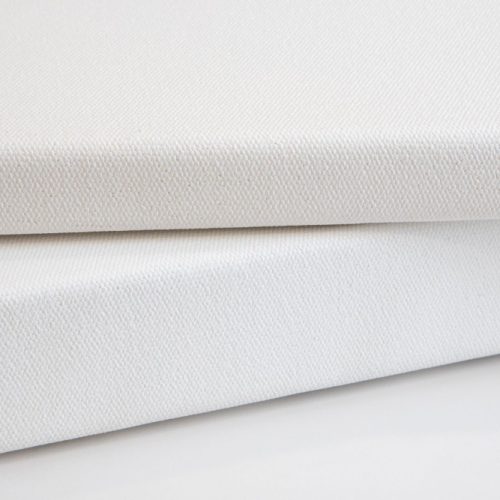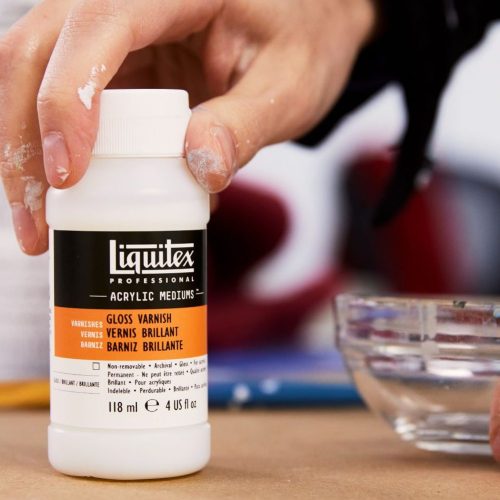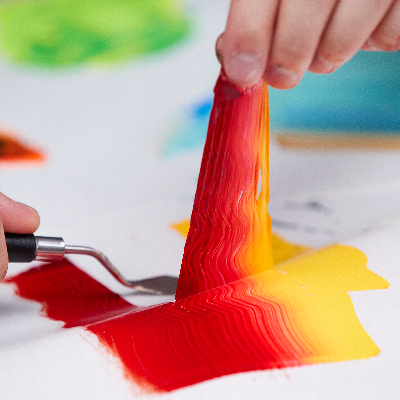Biocides
What are Biocides?
Biocides or preservatives are substances used to prevent the growth of microorganisms in liquid products. Without biocides, products would have a short shelf life and provide an environment where mould and other microorganisms can grow. Biocides ensure that our products maintain their quality over longer periods of time.
We add preservatives to our formulations in extremely low levels, measurable in parts per million (PPM). We carefully monitor levels to ensure there is just enough to maintain a long shelf life whilst not over preserving the product. Products are tested to ensure they are stable, that they are resistant to microbial contamination while maintaining the color, high quality and characteristics of the product.
The preservatives used in art materials are from a family of chemicals called isothiazolinones. These substances are effective biocides but have come under regulatory pressure because they can cause an allergic reaction in individuals that have already been sensitised to them. To date there are no alternatives that offer sufficient protection and do not impact the color of our products.
EU and UK Regulations
The biocides used in paints are subject to approval, conditions of use, restriction and labelling requirements from the following EU and equivalent GB regulations:
- Classification Labelling and Packaging Regulation or CLP (Regulation (EC) no. 1272/2008). For mixtures of substances, such as paint, the CLP regulation provides the methodology for classification. This classification, in turn, determines what warnings are needed on the product labels and SDSs. CLP incorporates, through Adaptation to Technical Progress (ATP), classifications of substances which are obligatory known as Harmonised classifications. Most biocides have harmonised classifications, and ATPs are published where these harmonised classifications are regularly reviewed. The 15th ATP includes the harmonised classification for the biocides MBIT, ZnPT, OIT, while previous ATPs have harmonised the classification of MIT, CMIT/MIT, BIT and others. There is some controversy on the minimum levels which require labelling as these have been based on case studies and not on test data as required in the regulation.
- Biocide Product Regulation or BPR (Regulation (EC) 528/2012). Under the BPR regulation all biocide actives and biocidal products will need to be assessed. Existing biocides which were on the market before implementation of BPR can still be used, however all biocides will eventually be assessed by BPR. BPR establishes conditions of use for the biocides already approved such as IPBC and how products treated with this biocide need to be labelled.
Impact to our Products
We keep strict compliance to all regulations in the markets where we operate. For Liquitex Professional products globally and for Liquitex Basics products in the EU and UK, most of our waterborne products will display a label informing of the presence of certain preservatives:
Fine Art Products:
Depending on the biocide package used in the products new labelling such as the following will be found on our labels:
“Contains MBIT. May produce an allergic reaction”
Product Safety
We always recommend that our products are used in a responsible manner and that contact with food and contact with skin is minimised. Case studies have shown that people who have a known sensitivity to isothiazolinones may have an allergic reaction if exposed to our products. We recommend that our customers should continue to use our products in a responsible way and if they know they are sensitive to isothiazolinones extra precautions should be taken such as speaking with their doctor before use or by wearing gloves to minimise exposure.
Titanium Dioxide
What is Titanium Dioxide?
Titanium dioxide, a white pigment, is the ninth most abundant element in the world and is found naturally in rocks and ores. Titanium Dioxide has been used for hundreds of years in paints, plastic goods, inks and paper due to its non-reactive and luminous properties. It is widely used in the decorative and artists paints industry to make our products opaque and is used in many formulations in addition to Titanium White. Titanium Dioxide is not unique to paint and is commonly found in other household products, including food, cosmetics and UV protection products.
EU and UK Regulation
In 2020 the European Commission confirmed a new regulation changing the hazard classification of Titanium Dioxide from non-hazardous to suspected carcinogen category 2 (CLP: Regulation (EC) no. 1272/2008). This update to CLP was written into the legislation before the UK left the European Union and has also been adopted into the GB equivalent of CLP.
This change was based on evidence from an historical toxicology study on rats, submitted to the European Commission by France. Preceding its entry into force, industry leaders from around the world have disputed the relevance of the study supporting the legislation. Disputing the methodology and the accuracy of its extrapolation to human, supporting their argument with an independent study involving over 24,000 employees who regularly handled Titanium Dioxide without reports of elevated cancer rates.
However, despite industry objections and lobbying from trade associations like CEPE, the European Commission upheld their decision to classify Titanium Dioxide as a suspected carcinogen. This regulation became effective from the 1st October 2021.
The classification is driven by the mechanical effects of an overload of dust in lungs and not specific to the chemical properties of Titanium Dioxide, therefore the carcinogenic classification only concerns Titanium Dioxide of a respirable size i.e. powder with a diameter of ≤ 10 μm.
The classification and labelling is purely hazard-based and does not reflect the actual risks related to the use of our products. For example, classification does not consider if there is an actual risk of exposure to Titanium Dioxide particles from paint. The Titanium Dioxide in paint are combined in a polymer or oil and not free dust particles. Once dry the Titanium Dioxide particles are bound in a solid matrix and not freely respirable as a dust. Titanium Dioxide has been assessed and is permitted for use in cosmetics, medical products, food and food contact materials.
Impact to our Products
The classification change will impact Liquitex’s products in different ways.
Fine Art Products:
Liquid products containing ≥ 1% of TiO2 with an aerodynamic diameter of ≤ 10 μm
Safety use instruction: Warning! Hazardous respirable droplets may be formed when sprayed. Do not breathe spray or mist.
Future Legislative Developments
The situation is not final for Titanium Dioxide, industry lead by The Titanium Dioxide Manufacturers Association (TDMA) are working towards establishing best practice methodologies for measuring particle size of Titanium Dioxide particles. Information from these new studies was presented to the Commission on the 4th May 2021 and provides evidence to exclude the suspected carcinogen classification of most grades of pure Titanium Dioxide and therefore possible exposure to respirable Titanium Dioxide particles via spray of liquid paints. Whilst testing is ongoing and new information is being passed through the supply chain Liquitex continues to assess this new information and its impact to the mandatory labelling of our products.
Product Safety
The powder form of titanium dioxide used in our art materials does not pose a risk. It is not volatile and consumers and professionals using our products cannot be exposed to levels of Titanium Dioxide that could cause lung overload. The titanium dioxide in wet or dry paint on your hand does not represent any health risk under normal use conditions for artist’s paint.
Once dry, the titanium dioxide particles that is embedded into a solid polymer layer of the paint. There is no risk of these particles loosening from the dried film, hence no chance of inhalation or ingestion.
Artists are advised to take extra precautions when spraying wet paint or sanding dry paint. These are the same safety measures you would use when performing similar activities in a domestic setting. Such as wearing appropriate personal protective equipment such as a dust mask (suitable for particulates) will avoid inhalation. However, it is unlikely that either process would result in free respirable Titanium Dioxide particles.







